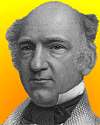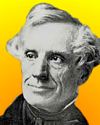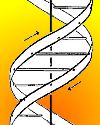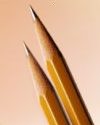 | TODAY IN SCIENCE HISTORY NEWSLETTER - 2 APRIL |
| Feature for Today |
 On 2 Apr 1814, Erastus Brigham Bigelow was born, an American industrialist, who developed power looms for making lace and many types of carpet. He invented his first loom for making coach lace at the age of 23. On 2 Apr 1814, Erastus Brigham Bigelow was born, an American industrialist, who developed power looms for making lace and many types of carpet. He invented his first loom for making coach lace at the age of 23. He was a member of the committee that founded the Massachusetts Institute of Technology (MIT). This short biography from A History of American Manufactures (1866) describes him as one of the "most eminent of American inventors." |
| Book of the Day | |
| |
| Quotations for Today | |
 | "To the average mathematician who merely wants to know his work is securely based, the most appealing choice is to avoid difficulties by means of Hilbert's program. Here one regards mathematics as a formal game and one is only concerned with the question of consistency ... . The Realist position is probably the one which most mathematicians would prefer to take. It is not until he becomes aware of some of the difficulties in set theory that he would even begin to question it. If these difficulties particularly upset him, he will rush to the shelter of Formalism, while his normal position will be somewhere between the two, trying to enjoy the best of two worlds." |
 | "Whenever there is a hard job to be done I assign it to a lazy man; he is sure to find an easy way of doing it." |
 | "[It would not be long] ere the whole surface of this country would be channelled for those nerves which are to diffuse, with the speed of thought, a knowledge of all that is occurring throughout the land, making, in fact, one neighborhood of the whole country." |
| QUIZ | |
| Before you look at today's web page, see if you can answer some of these questions about the events that happened on this day. Some of the names are very familiar. Others will likely stump you. Tickle your curiosity with these questions, then check your answers on today's web page. | |
| Births | |
 |  Paul Joseph Cohen, born 2 Apr 1934, is an American mathematician who was recognized with an award for his proof of the independence of the continuum hypothesis from the other axioms of set theory. This award is the most prestigious given to mathematicians, and is regarded as the equivalent of a Nobel Prize in their discipline. Paul Joseph Cohen, born 2 Apr 1934, is an American mathematician who was recognized with an award for his proof of the independence of the continuum hypothesis from the other axioms of set theory. This award is the most prestigious given to mathematicians, and is regarded as the equivalent of a Nobel Prize in their discipline. |
| Deaths | |
 |  A Swiss psychiatrist (1884-1922) devised the inkblot test that bears his name and that is widely used clinically for diagnosing psychopathology. A Swiss psychiatrist (1884-1922) devised the inkblot test that bears his name and that is widely used clinically for diagnosing psychopathology.  Can you name this scientist? Can you name this scientist? |
 |  Samuel Morse (1791-1872) was an American painter and inventor who, independent of similar efforts in Europe, developed an electric telegraph, and thereafter, devised the Morse Code. Samuel Morse (1791-1872) was an American painter and inventor who, independent of similar efforts in Europe, developed an electric telegraph, and thereafter, devised the Morse Code. |
| Events | |
 |  On 1 Apr 1953, the journal Nature published a paper with this date titled Molecular Structure of Nucleic Acids: A Structure for Deoxyribose Nucleic Acid, in which they described a double helix structure for DNA. On 1 Apr 1953, the journal Nature published a paper with this date titled Molecular Structure of Nucleic Acids: A Structure for Deoxyribose Nucleic Acid, in which they described a double helix structure for DNA.  Who were the authors of the paper? Who were the authors of the paper? |
 |  On 1 Apr 1889, Charles M. Hall patented an inexpensive electrolytic process to extract a certain metal from its ore. Although this metal is the most abundant metal in the earth's crust, it cannot be separated from its ore by a smelting process. On 1 Apr 1889, Charles M. Hall patented an inexpensive electrolytic process to extract a certain metal from its ore. Although this metal is the most abundant metal in the earth's crust, it cannot be separated from its ore by a smelting process.  Which metal did Hall's process separate from its ore? Which metal did Hall's process separate from its ore? |
| Answers |
When you have your answers ready to all the questions above, you'll find all the information to check them, and more, on the April 2 web page of Today in Science History. Or, try this link first for just the brief answers. Fast answers for the previous newsletter for April 1: William Harvey; X-ray diffraction; preservation and transfusion of human blood; The Times (London); Dr. Joseph Lister. |
| Feedback |
 If you enjoy this newsletter, the website, or wish to offer encouragement or ideas, please send feedback by using your mail reader Reply button. If you enjoy this newsletter, the website, or wish to offer encouragement or ideas, please send feedback by using your mail reader Reply button. |
--
If you do not want to receive any more newsletters, this link
To update your preferences and to unsubscribe visit this link
If you do not want to receive any more newsletters, this link
To update your preferences and to unsubscribe visit this link
! !



Δεν υπάρχουν σχόλια:
Δημοσίευση σχολίου